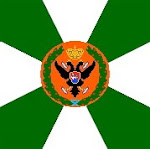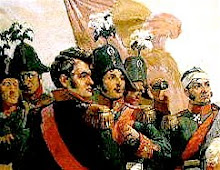The Kinburn Dragoon Regiment
On the left I've added an image of a trooper of the Kinburn Dragoons as featured in one of Bryan Fosten's plates in the Osprey publication, The Russian Army of the Napoleonic Wars (2): Cavalry 1799-1814 by Philip Haythornthwaite. I have always found the Russian cavalry uniforms of the time to be quite elegant compared to the showy garb of some other nations of the time, and this illustration conveys that very well. The dark green sets off the yellow facings nicely.
I prefer a darker green for my Russians- the original green was almost black when new, and although it would fade over time, I still feel that a lot of Russian miniatures out there are painted a shade of green that end up being too light- or too bright- for my tastes. While allowing for the effect of scale colour, I go for a very dark green (although I may highlight with something lighter, especially when only a small amount of green may be showing- between straps for example).
Painting cavalry can be a pain what with the straps and trying to get a horse to- well, look like a horse! But the biggest chore is to remove flash and to actually glue the riders to the horses. It almost always takes some filing and tweaking to get a good fit between the two. I cannot stand having a big gap of space between the equine posterior and the saddlecloth!
In the case of the Kinburn, I am modifying the officer figure as I like to model some variety between the regiments. A few troopers will be wearing forage caps or bandaged heads instead of helmets for the same reason.
I will have two, six-figure squadrons of the Kinburn Dragoons. The Kharkov and Kiev Dragoons will each field four squadrons- a lot of dragoons in this army!












